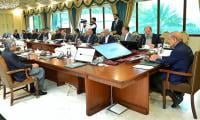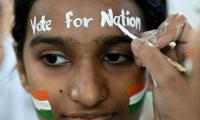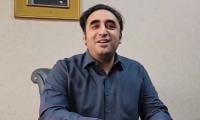High on current expenditure (80.6%), debt (Rs1,620 billion) and defense (Rs1,495 b billion) and low on development (19.4%) and sustainable development goals, Miftah Ismail’s fiscal shenanigans will leave just Rs100 billion for development for the next government, which would be left with no option but to rush to the IMF and multi-donors to balance skyrocketing current account and fiscal deficits and to preempt a possible default. What a cruel parting kick by a loyal corporate manager to the next government?
As a follower of the neo-liberal economics and Washington consensus, even though demolished by President Trump, the newly emerged finance minister cut taxes across the board and even offered tremendous concessions to the black economy and the money launderers.
On the contrary, he has placed much greater burden of indirect and other taxes (Rs3,153 billion) on the people as compared to direct taxes (Rs1,735 billion) on the rich and the upper middle class. Except for 10 per cent raise in the salaries and pensions, there is nothing new in his budget statement to alleviate the sufferings of the people, who will be paying almost Rs 30 per liter on petroleum products to fill his empty coffers. Even the minimum wage of laborers and workers was not raised—leaving poor families in the miseries of not being able to buy two meals with Rs15,000 or lesser wages.
In terms of political economy of the budget, finance minister had to cater to the demands of the big business, civil and military establishment as opposed to the people for whom the government has allocated a paltry amount of Rs5 billion to achieve the Sustainable Development Goals in terms of improving Human Development Indicators. Noting the stunted growth of children, the minister was generous in throwing Rs10 billion to ameliorate the sufferings of our 34 % children—there is no economist in the world who could contemplate such a shabby treatment of our future generation entrapped in a death trap of hunger and disease.
As we spend 80 per cent of our resources on non-development side, almost nothing is left for poverty alleviation except Benazir Income Support Programme and as we spend just 0.5 percent on health and two per cent of our GDP on education, whereas we spend 3.2 per cent of GDP on defense, which doesn’t include pensions, purchase of weapon systems, nuclear and missile programme etc.
The Nawaz Sharif government was lucky that soon after it took over the government the international prices of commodities, petroleum products in particular, had crashed which brought down our hefty import bill and created a much needed fiscal space.
An exceptional opportunity was created with the launching of grand investment plan of One Belt One Road for the Eurasian physical infrastructure, solely envisaged by President Xi Jinping. Out of 56 billion dollars of intended investment, US$29 billion have already been invested in the energy and physical infrastructures. It created a great hype for foreign investment, but it also brought our current accounts under greater pressure as the government failed to expand a narrow base of exports.
The IMF also came up with an Extended Fund Facility worth $4.4 billion for three years. But as we got off the IMF hook, both fiscal and external account deficit have ballooned to almost pre-programme levels. The fiscal deficit is now 5.5 percent and current account is hovering around 5 percent of the GDP with foreign exchange reserves depleting to dangerous levels: the government and its granted debt has soured to 69.7 percent of the GDP; trade deficit of the last nine months is $22.3 billion and overall current account deficit is going to cross $15 billion by the end of this fiscal year.
The above facts only confirm that we are back into the mold of crisis of dependency and wasted the fiscal space that we got while ignoring to undertake basic reforms and restructuring our hybrid economy. Our agriculture sector is caught in a stagnant feudal and inefficient mode of productions and archaic relations; our industrial and manufacturing sectors continue to be uncompetitive due to high cost of production as we ignore small manufacturing business and enterprises; the current process of accumulation is exclusionary and unsustainable; our Human Development Indicators are even worse than sub-Saharan Africa; apart from Central Punjab, all peripheral regions are marginalised. Our policies of revenue generation and structure of expenditure is anti-people and pro-elite and serve primarily civil and military establishment.
A fragile base of dependent and resource-starved dependent economy cannot take the unbearable burden of a heavy and bureaucratised and militarised superstructure. The PML-N government essentially represented the interests of Punjabi bourgeoisie and non-tax paying forces of bazaar and neglected any meaningful reforms to address the basic distortions and structural imbalances.
It did succeed in raising the GDP growth rate to 5.8 percent, installed a capacity of over 10,000 MW of electricity and built physical infrastructures, but failed to reform taxation system, expand exports, reduce debt, improve governance and ignored all social sectors.
Strangely enough the economist like Dr Ishrat Hussain recalls the growth period of first 40 years of Pakistan while forgetting that it was essentially a post-Korean war boom, exploitation of East Pakistan and foreign assistance to a most allied ally that sustained a better growth rate due to exogenous factors.
Similarly, Imran Khan is also quite sanguine about the Ayub Khan’s Harvard Model of Development that was dependent on foreign-aid, import-substitution and created monopolies at the cost of social stratification and region inequality; it did work till 1964 and then met a social and economic disaster. How Mr Khan will fit his 11 points into that the Ayub model of progress my friend Asad Omar will find hard to reconcile the two opposites.
Indeed, Bilawal Bhutto has raised some basic questions about the Sharif brick and mortar model while emphasising the need to shift to a people-centered model of growth. But the PPP’s stalwarts are clueless about the budget and have no sensible brief to counter a stop-gap budget.
This parliament has not only exhausted its term, but also the legitimacy to set a new path of development. The “fourth generation” of industrial revolution, scientific/ technological/ information transformations and new strides of Artificial Intelligence are transforming the world. But, struck in their paranoia, our strategists are obsessed with what they call “hybrid warfare”—a cliché erroneously borrowed from McNamara’s subliminal warfare.
By squeezing civil society, suppressing dissent, engineering political processes and hoodwinking an informed debate, they are further pushing Pakistan into the dark ages. On the other hand, the mainstream parties are either fighting for their survival or competing to become a part of a sham political dispensation. As the battle for democracy and social rights is on its way to exhaustion, what could one suggest to the clueless parliamentarians how and where to disagree with the new minister and his fiscal schenanigans?
President called the Senate meeting under Article 54 of the Constitution
Crowd’s long wait due to persistent rain backed by heavy showers came to an end just for two deliveries with New...
Chief Justice Justice Faez Isa said amendments to the High Court Rules were necessary before appointment of judges
A division bench of the PHC comprising Justice SM Attique Shah and Justice Syed Arshad Ali heard the petition in which...
According to the Senate Secretariat, Gilani emphasized better coordination between the two Houses







